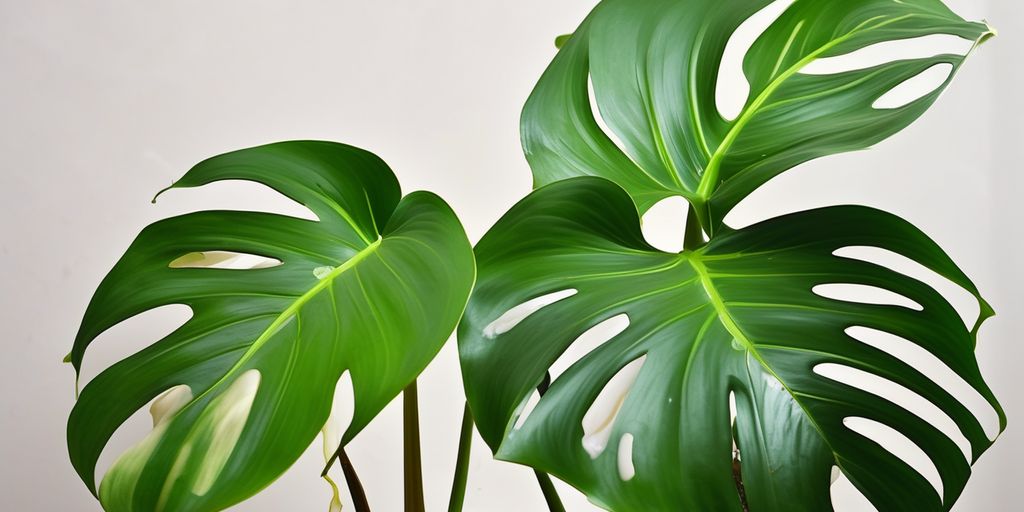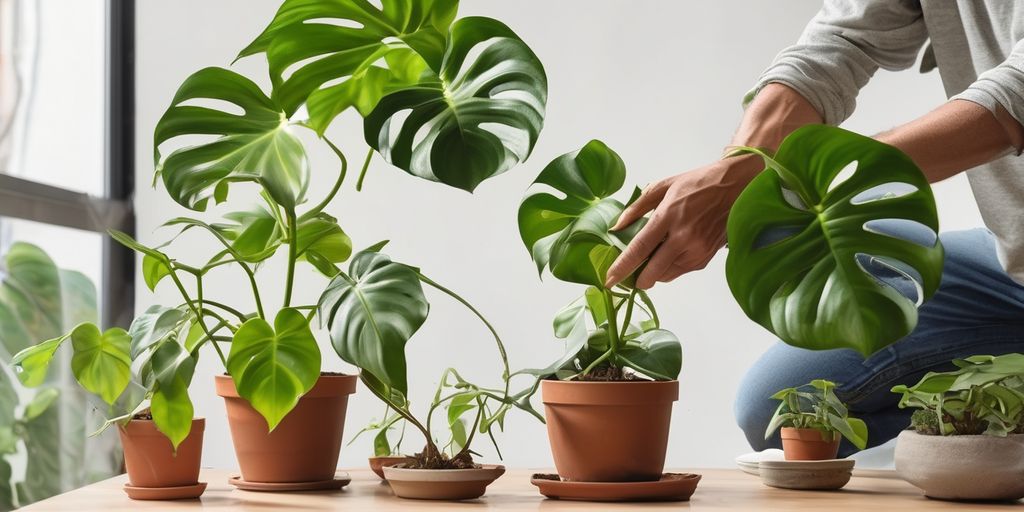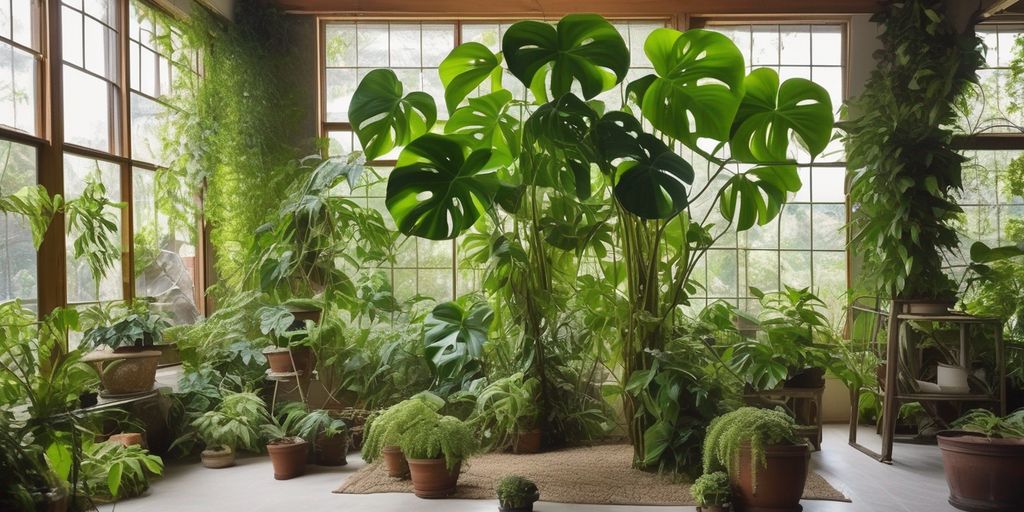Philodendrons are a diverse and popular group of houseplants, known for their lush foliage and varying growth habits. This guide explores the different types of Philodendrons, focusing on their characteristics, popular varieties, care tips, propagation techniques, and how to manage pests and diseases. Whether you’re a seasoned plant enthusiast or a beginner, understanding these aspects will help you better care for these beautiful plants.
Contents
Key Takeaways
- Philodendrons are broadly categorized into climbing and non-climbing types, each with distinct characteristics.
- Leaf shape, size, and color vary widely among Philodendron species, adding to their appeal.
- Some Philodendrons are quite rare and exotic, making them highly sought after by collectors.
- Proper care including appropriate watering, lighting, and fertilization is crucial for healthy growth.
- Philodendrons can be propagated through various methods such as stem cuttings, air layering, and seed germination.
Understanding Philodendron Varieties
Characteristics of Climbing vs. Non-Climbing Types
Philodendrons can be broadly categorized into climbing and non-climbing varieties. Climbing types, such as the Philodendron Hederaceum, use aerial roots to ascend surfaces, making them ideal for trellises or hanging baskets. Non-climbing types, like the Philodendron Xanadu, grow upright and are better suited for pots as floor plants.
Leaf Shapes and Sizes
The diversity in leaf shapes and sizes among Philodendron species is remarkable. Leaves can range from small and heart-shaped to large and deeply lobed. This variation allows gardeners to choose a plant that best fits their aesthetic and space requirements.
Color Variations
Philodendrons exhibit a wide range of colors, from deep greens to vibrant variegated patterns. Some species, like the Philodendron Pink Princess, are highly sought after for their unique pink and green foliage. This color diversity can add a striking visual element to any indoor garden.
Popular Climbing Philodendrons
Philodendron Hederaceum
Philodendron Hederaceum, commonly known as the heartleaf philodendron, is a versatile climber known for its lush, heart-shaped leaves. It thrives in moderate to low light and prefers moist soil.
Philodendron Gloriosum
This species stands out with its large, velvety leaves marked with striking white veins. Philodendron Gloriosum requires higher humidity and well-draining soil to prevent root rot.
Philodendron Micans
Philodendron Micans is celebrated for its iridescent, velvet-textured leaves that change hue depending on the light. It’s an ideal choice for indoor gardeners looking to add a touch of glamour to their plant collection.
Non-Climbing Philodendrons to Know
Philodendron Xanadu
Philodendron Xanadu, often recognized for its dense, clumping growth habit, is a popular choice for indoor and outdoor settings. This variety thrives in moderate light and appreciates regular watering, making it a low-maintenance option for enthusiasts.
Philodendron Bipinnatifidum
Known for its deeply lobed leaves, the Philodendron Bipinnatifidum can grow quite large, making it a statement piece in any garden or room. It prefers bright, indirect light and should be watered when the top inch of soil feels dry.
Philodendron Selloum
Philodendron Selloum is a dramatic, tropical plant that features large, glossy leaves. It’s perfect for creating a lush, jungle-like feel in any space. Care for this philodendron involves protecting it from cold drafts and providing ample humidity.
Rare and Exotic Philodendrons
Philodendron Spiritus Sancti
This elusive variety, native to Brazil, is often considered the holy grail of philodendron collectors. Its rarity and striking appearance make it highly sought after. It features long, narrow leaves that can reach up to 3 feet in length.
Philodendron Melanochrysum
Known for its velvety, dark green leaves with bright, golden veins, the Philodendron Melanochrysum is a stunning addition to any collection. It thrives in humid environments and requires indirect, but bright, light to maintain its vibrant coloration.
Philodendron Pink Princess
This philodendron is famous for its unique pink variegation. Each leaf is a canvas displaying a mix of deep greens and vibrant pinks. Care for the Pink Princess involves providing ample humidity and protecting it from direct sunlight to prevent the loss of its precious variegation.
Caring for Your Philodendron
Watering and Humidity Needs
Proper hydration is crucial for your philodendron’s health. Water your plant when the top inch of soil feels dry. Aim for high humidity levels, ideally between 60% to 80%, to mimic their natural tropical environment. Use a humidity tray or a room humidifier to achieve this.
Light and Temperature Requirements
Philodendrons thrive in indirect, bright light but can tolerate lower light conditions. Avoid direct sunlight, which can scorch their leaves. Maintain a consistent temperature between 65°F to 80°F, avoiding drafts and sudden temperature changes.
Fertilization and Pruning Tips
Fertilize your philodendron every month during the growing season with a balanced, water-soluble fertilizer. Reduce feeding in the winter. Regular pruning helps maintain shape and encourages fuller growth. Remove yellow or dead leaves to keep your plant healthy and attractive.
Philodendron Propagation Techniques
Stem Cuttings
One of the most effective methods for propagating philodendrons is through stem cuttings. This technique involves cutting a 4-6 inch section of the stem just below a node. Ensure the cutting includes at least two leaves for optimal growth. Place the cutting in water or directly into soil, keeping the environment humid and warm to encourage rooting.
Air Layering
Air layering is a slightly more advanced propagation technique that promotes root development while the stem is still attached to the parent plant. Wrap moist sphagnum moss around a wounded section of the stem, then cover it with plastic to retain moisture. Roots should begin to form within a few weeks, after which the new plant can be severed from the parent and potted independently.
Seed Germination
While not as common due to the slow growth and lower success rate, seed germination can be a rewarding propagation method for philodendron enthusiasts. Plant the seeds in a well-draining soil mix, maintaining consistent moisture and warmth. Germination can take several weeks, so patience is crucial. Once sprouted, seedlings require careful handling to avoid damaging the delicate roots.
Philodendron Pests and Diseases
Common Pests
Philodendrons are susceptible to a variety of pests, including aphids, spider mites, and mealybugs. Regular inspection and maintaining clean foliage can help prevent infestations. If pests are detected, using insecticidal soap or neem oil can be effective treatments.
Disease Prevention
Keeping your philodendron healthy is the best defense against diseases. Ensure proper light, adequate watering, and good air circulation. Overwatering should be avoided as it can lead to root rot, which is a common issue in philodendrons.
Treatment Solutions
When a philodendron does contract a disease, early detection and treatment are crucial. Remove any affected leaves and isolate the plant to prevent the spread of the disease. For fungal infections, applying a fungicide may be necessary. Additionally, adjusting care routines to correct the conditions that led to the disease can help in recovery.
Conclusion
In conclusion, the diverse types of Philodendron offer a fascinating glimpse into the world of tropical plants. Each variety, from the heart-shaped leaves of the Philodendron hederaceum to the striking patterns of the Philodendron gloriosum, brings its own unique beauty and characteristics. Whether you are a seasoned gardener or a novice looking to add some greenery to your space, understanding the different types of Philodendron can help you choose the right plant to enrich your environment. With proper care and attention, these plants can thrive and bring life to any indoor or outdoor setting.
Frequently Asked Questions
What are the main types of Philodendron?
Philodendrons are mainly categorized into climbing and non-climbing varieties. Climbing types, such as Philodendron Hederaceum, tend to grow upwards and require support, while non-climbing types, like Philodendron Xanadu, grow outward and are more shrub-like.
How often should I water my Philodendron?
Watering needs can vary based on the specific type of Philodendron and environmental conditions, but generally, they should be watered when the top inch of soil feels dry to the touch.
What are the light requirements for Philodendrons?
Philodendrons typically prefer bright, indirect light. Direct sunlight can scorch their leaves, while too little light can cause slow growth and leggy stems.
Can Philodendrons be propagated easily?
Yes, Philodendrons can be propagated quite easily using methods such as stem cuttings, air layering, or seed germination, with stem cuttings being the most common and straightforward method.
What common pests affect Philodendrons?
Philodendrons can be affected by pests such as aphids, mealybugs, and spider mites. Regular inspection and maintaining proper care are crucial for prevention.
Are there any rare Philodendron types?
Yes, there are several rare types of Philodendron, such as Philodendron Spiritus Sancti and Philodendron Pink Princess, which are prized for their unique appearances and are often sought after by collectors.




